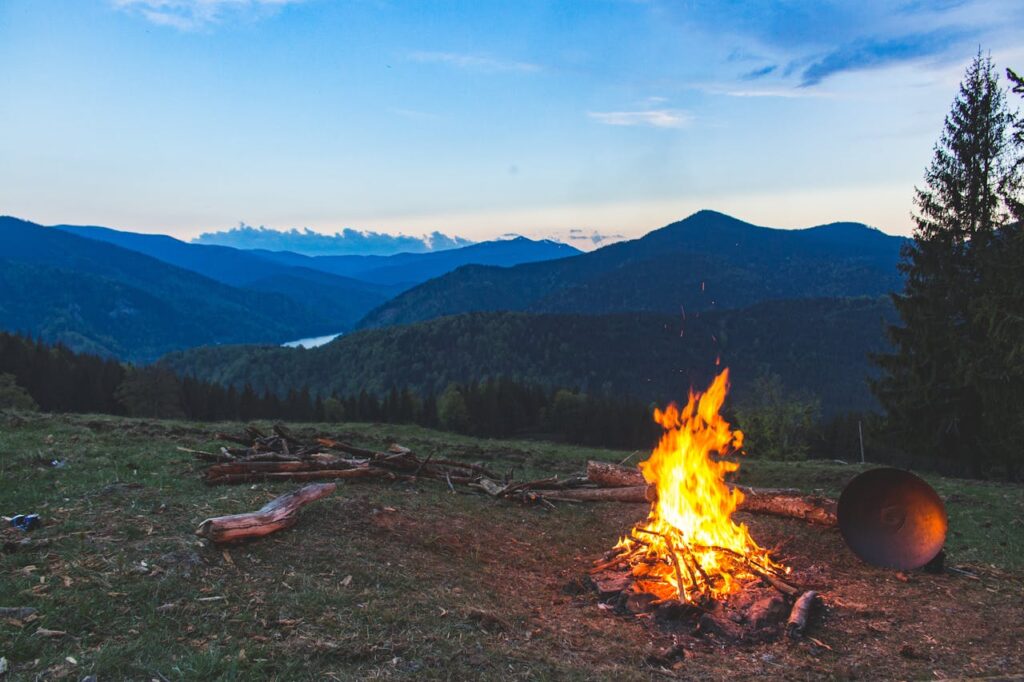Survival. This scenario often plays out in movies when people find themselves alone in the wilderness with emergency supplies and brainpower. We all know that starting a fire becomes essential when stranded in an unfamiliar environment where all tools for ignition are missing. So, it’s a must to learn necessary survival skills ahead of time, since learning these skills after emergency situations start is too late.
Regardless of why or how you find yourself in an emergency setting without supplies, you will only have limited time to survive before becoming part of the casualty statistics. That’s why this article teaches survival strategies, specifically for the initial 24-hour timespan, because it represents the most urgent phase of survival. Creating a fire ranks higher than collecting food despite your initial assumptions about survival techniques.
Collect All of the Fire Building Materials
The fundamental requirement to start a fire depends on proper material selection. Gather materials such as wood, rocks, leaves, and bark, which will aid you in making your fire. To make tinder work, you should collect dry grass or tiny twigs, which serve as kindling. The chosen material needs to be easily ignited so it can help start your fire more efficiently.
Your fire-building success depends on completely dry material since most tinder or kindling can block your attempts, wasting time and effort. Trying to light up a soggy sponge shows how similar it is to wet materials that resist being ignited.
Option 1: A Ferro Rod
The survival value of a ferro rod tool proves crucial during emergency survival situations. The small fire-starting tool made from synthetic pyrophoric alloy generates hot sparks reaching 3,315°C after it strikes hard surfaces, which proves essential in fire-making activities. Of course, the dimensions, together with the specific material characteristics of ferro rods, matter a lot.
A rod’s size determines its spark volume because bigger rods produce bigger sparks, though small rods remain more convenient to carry. On the other hand, the softness of certain rods creates bigger sparks, yet the material deteriorates quickly, whereas the harder rods maintain durability, although they need increased manual work. Selecting a rod with balanced characteristics for effective fire-starting remains essential.
However, you should always keep in mind that success comes from having a delicate and flaky tinder supply that catches sparks while sustaining a slow burn for sufficient time until it can set larger wood pieces on fire.
Option 2: Utilizing Steel and Flint
You’ve heard of steel and flint as one of the most common ways to initiate fire production. Striking the flint with steel at a specific angle will generate sparks to ignite the tinder. And the effectiveness of your fire-starting process depends on having both sharp steel and flint pieces. You should position your tinder source close to where you will strike with steel, then blow on the sparks to create smoldering or red glowing embers. After sparking tinder, you must layer it with kindling until your fire burns.
Option 3: A Friction Fire
Two basic methods to create fires without equipment include the use of friction-based approaches like bow drilling combined with hand drilling. You probably wonder how it functions, but it’s pretty simple. Friction between two wood pieces creates sufficient heat to start fires, which ignites small tinder pieces needed for lighting larger fires.
However, you have to be aware that your success in generating heat by friction depends on one crucial aspect: using wood pieces that are dry and free of knots or any other protrusions. If not, they will block you from achieving effective heat production. A combination of pressure on both wood pieces will build sufficient heat and friction for tinder ignition. You should use the generated heat to place kindling and fuel items until the fire burns powerfully.
Option 4: Magnifying Lens or Glass
The practice of solar ignition fires relies on sunlight to heat materials, which will then start your fire. To create solar fires through this technique, you will need open skies with sunlight exposure, together with a magnifying glass or lens tool that can concentrate sunlight rays onto specific points for burning dry grass, paper, leaves, and twigs.
The setup of your magnifying glass at a slant will focus the sunbeams onto specific parts of your tinder pile and generate sufficient heat for ignition. Adjust the lens position slightly until you witness smoke coming from the pile. Foster the tinder mush with a delicate breath until flames start to emerge under the surface. Start with kindling pieces one by one to complete the transition to steady fire before introducing bigger wood pieces for fuel.
Don’t Let the Wet Weather Stop You
The very first step to building a fire requires selecting a dry spot to begin working. An ideal starting point for building a fire is under a natural shelter like caves and hollowed trees, or under rock or tree overhangs to keep the rain off. However, in the absence of readily available shelter, you will need to construct your own refuge by utilizing tarps and stacking logs with sticks and branches. Your shelter walls must extend above the fire pit area to prevent rainfall from reaching the flames.
Once you secure protection for your fire from precipitation, then you can begin fire-building. Remember that safeguarding your fire base from the rain becomes your first duty since dry kindling makes the perfect fuel for an overnight bonfire.
Make Pine Needles Your Hidden Weapon
You should resort to pine tree needles when rain persists and dry kindling remains out of touch. The resin-coated pine tree needles represent one of the most dependable materials for producing fire startup in rainy conditions. It’s because pine needles, protected by wax-like resin, become the best type of fire-starting tinder since they resist water absorption. Pack all dry needles on top of your tinder bundle into a single pile. The lack of accessible dry kindling prompts you to use cattail fluff and shredded bark as alternatives instead.
Even though beginning a survival campfire appears challenging initially, it turns out to be a manageable task. Knowledge, coupled with determination, enables anyone to learn fire-making techniques that require no tools or materials under any circumstances. The guidelines you just read can become extremely useful whenever you decide to spend time outdoors. Now you really don’t have a reason to avoid such an adventure – so go out and enjoy your camping in the wild!


0 Comments